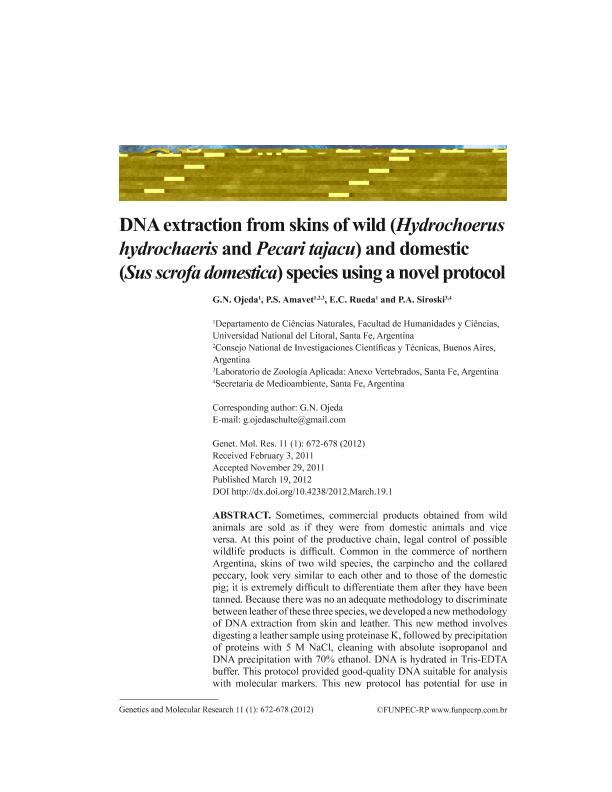Artículo
DNA extraction from skins of wild (Hydrochoerus hydrochaeris and Pecari tajacu) and domestic (Sus scrofa domestica) species using a novel protocol.
Fecha de publicación:
03/2012
Editorial:
Fundacao de Pesquisas Científicas de Riberao Preto
Revista:
Genetics and Molecular Research
ISSN:
1676-5680
Idioma:
Inglés
Tipo de recurso:
Artículo publicado
Clasificación temática:
Resumen
Sometimes, commercial products obtained from wild animals are sold as if they were from domestic animals and vice versa. At this point of the productive chain, legal control of possible wildlife products is difficult. Common in the commerce of northern Argentina, skins of two wild species, the carpincho and the collared peccary, look very similar to each other and to those of the domestic pig; it is extremely difficult to differentiate them after they have been tanned. Because there was no an adequate methodology to discriminate between leather of these three species, we developed a new methodology of DNA extraction from skin and leather. This new method involves digesting a leather sample using proteinase K, followed by precipitation of proteins with 5 M NaCl, cleaning with absolute isopropanol and DNA precipitation with 70% ethanol. DNA is hydrated in Tris-EDTA buffer. This protocol provided good-quality DNA suitable for analysis with molecular markers. This new protocol has potential for use in identifying leather products of these species using molecular markers based on RAPDs.
Palabras clave:
DNA ISOLATION
,
SKINS
,
RAPD
,
SPECIFIC DIFFERENTIATION
Archivos asociados
Licencia
Identificadores
Colecciones
Articulos(CCT - SANTA FE)
Articulos de CTRO.CIENTIFICO TECNOL.CONICET - SANTA FE
Articulos de CTRO.CIENTIFICO TECNOL.CONICET - SANTA FE
Citación
Ojeda, Guillermo Nicolás; Amavet, Patricia Susana; Rueda, Eva Carolina; Siroski, Pablo Ariel; DNA extraction from skins of wild (Hydrochoerus hydrochaeris and Pecari tajacu) and domestic (Sus scrofa domestica) species using a novel protocol.; Fundacao de Pesquisas Científicas de Riberao Preto; Genetics and Molecular Research; 11; 1; 3-2012; 672-678
Compartir
Altmétricas




